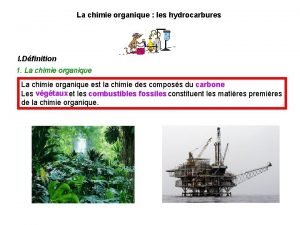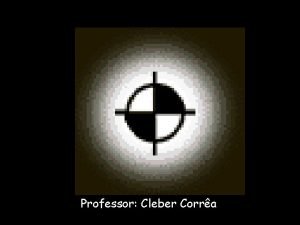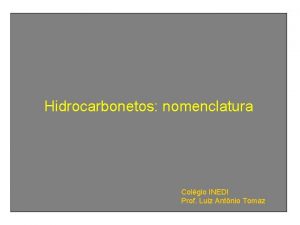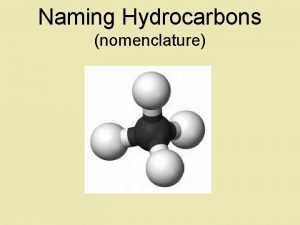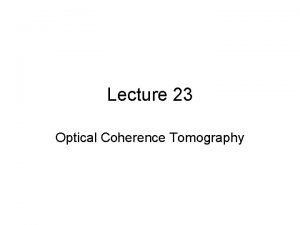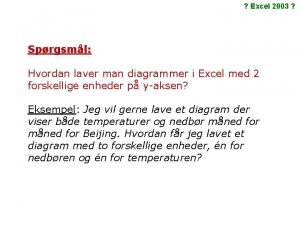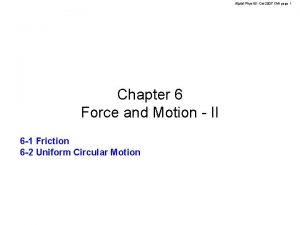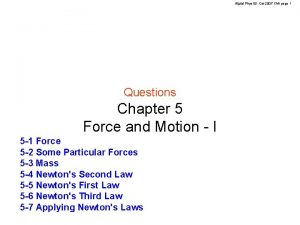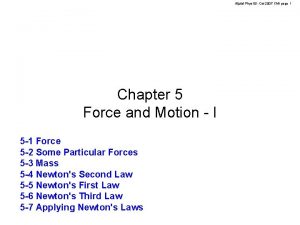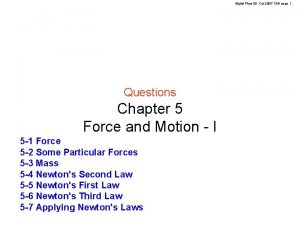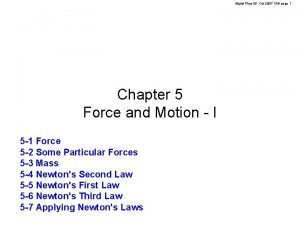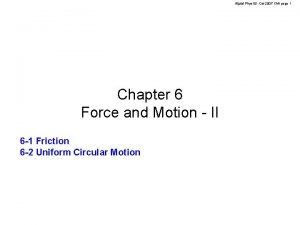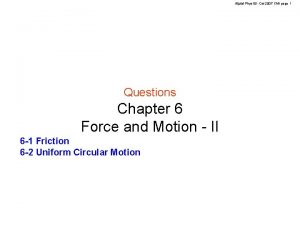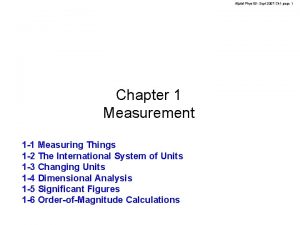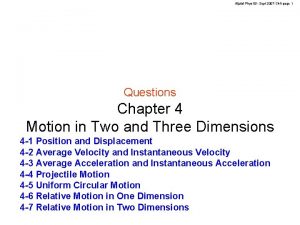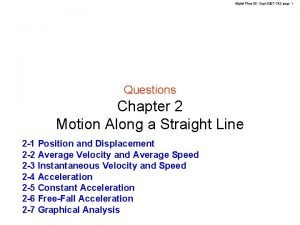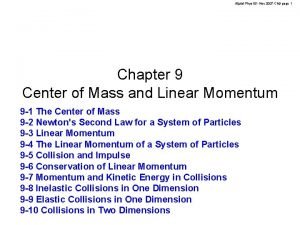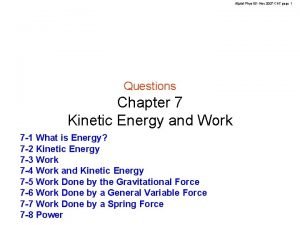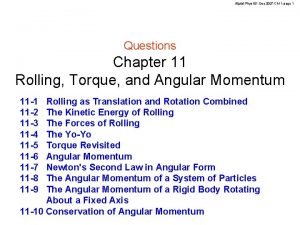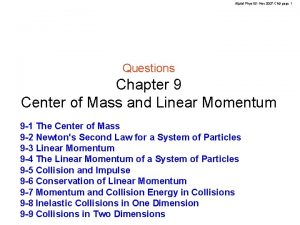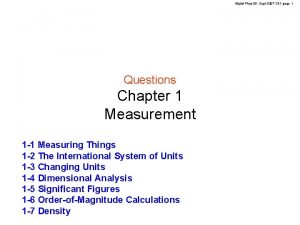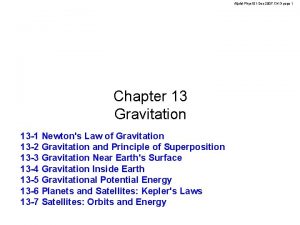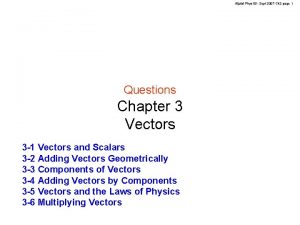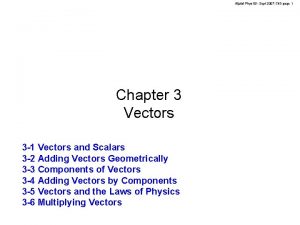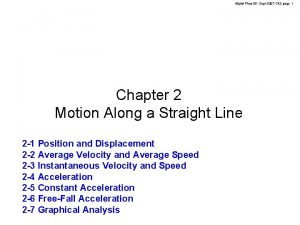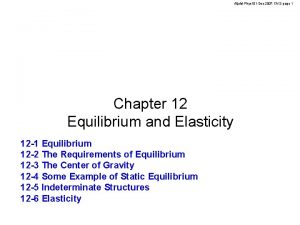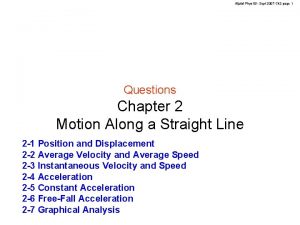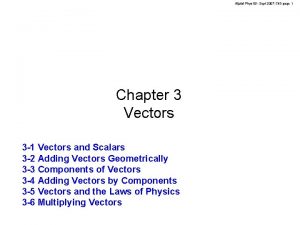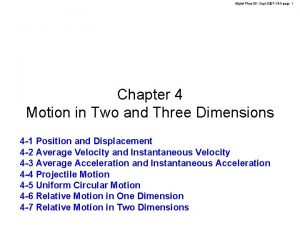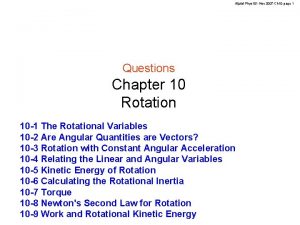AljalalPhys 101 Oct 2007 Ch 7 page 1








































- Slides: 40

Aljalal-Phys 101 -Oct 2007 -Ch 7 -page 1 Chapter 7 Kinetic Energy and Work 7 -1 What is Energy? 7 -2 Kinetic Energy 7 -3 Work 7 -4 Work and Kinetic Energy 7 -5 Work Done by the Gravitational Force 7 -6 Work Done by a General Variable Force 7 -7 Work Done by a Spring Force 7 -8 Power

7 -1 What is Energy? Quantity associated to the state of a system Aljalal-Phys 101 -Oct 2007 -Ch 7 -page 2 Energy is a number that we associate with a system of one or more objects. Energy is a scalar quantity. Energy can be used to predict the behavior of a system. Energy can be transformed from one type to another and transferred from one object to another, but the total amount of energy of an isolated system is always the same. Energy of an isolated is conserved. In this chapter, we study one type of energy = kinetic energy and one way in which energy can be transferred = work.

Aljalal-Phys 101 -Oct 2007 -Ch 7 -page 3 7 -2 Kinetic Energy Formula Kinetic energy Speed Mass SI unit for energy is the joule

Aljalal-Phys 101 -Oct 2007 -Ch 7 -page 4 7 -2 Kinetic Energy Example 1 Two identical cars start from rest at the opposite ends of a 1. 0 -km straight road. Each car weighs 5. 0 x 103 N and accelerates at constant rate of 1. 5 m/s 2. What is the total kinetic energy of the two cars just before the collision? Solution The kinetic energy of the two cars just before the collision is Finding the mass of one car Finding the speed of one car

Aljalal-Phys 101 -Oct 2007 -Ch 7 -page 5 7 -3 Work Transfer of energy The force increases the kinetic energy of the object. The force has transferred energy to the object from you. The force decreases the kinetic energy of the object. The force has transferred energy from the object to you. Positive work is done on the object by the force. Negative work is done on the object by the force. Work W is energy transferred to or from an object by means of a force acting on the object. Energy transferred to the object is positive work. Energy transferred from the object is negative work.

Aljalal-Phys 101 -Oct 2007 -Ch 7 -page 6 7 -4 Work and Kinetic Energy Work by a constant force The force does not change in magnitude or direction as the object moves. Work done by a constant force Constant force Displacement Work is a scalar quantity. SI unit for work is the joule. Angle between the force and displacement F cos f is the component of the force along the direction of the displacement. All the work is done by the force component along the displacement. The force component perpendicular to the displacement does zero work.

7 -4 Work and Kinetic Energy Positive and negative work The force does positive work on the object The force does zero work on the object Aljalal-Phys 101 -Oct 2007 -Ch 7 -page 7 The force does negative work on the object A force does positive work when it has a vector component in the same direction as the displacement and it does negative work when it has vector component in the opposite direction. A force does zero work when it has no component along the displacement.

Aljalal-Phys 101 -Oct 2007 -Ch 7 -page 8 7 -4 Work and Kinetic Energy Work by several forces Work done by the two forces = work done by F 1 + work done by F 2 = work done by FNet

7 -4 Work and Kinetic Energy Work-kinetic energy theorem Aljalal-Phys 101 -Oct 2007 -Ch 7 -page 9 Work-kinetic energy theorem If the net work done on the object is positive, the object's kinetic energy increases by the amount of the work. If the net work done on the object is negative, the object's kinetic energy decreases by the amount of the work.

Aljalal-Phys 101 -Oct 2007 -Ch 7 -page 10 7 -4 Work and Kinetic Energy Derivation - Work-kinetic energy theorem The force does not change in magnitude or direction as the object moves. Newton's second law along the x axis Since the force is constant, the acceleration is constant multiply both sides by ½ m Work-kinetic energy theorem

Aljalal-Phys 101 -Oct 2007 -Ch 7 -page 11 7 -4 Work and Kinetic Energy Checkpoint 1 Solution A particle moves along the x axis. If the particle's velocity changes from (a) -5 m/s to -1 m/s decreases negative (b) -3 m/s to 3 m/s remains the same zero (c) 2 m/s to -3 m/s increases positive Does the kinetic energy of the particle increase, decrease, or remain the same? Is the work done on the particle positive, negative, or zero?

Aljalal-Phys 101 -Oct 2007 -Ch 7 -page 12 7 -4 Work and Kinetic Energy Example 2 Two men slide an initially stationary box of mass 250 kg on a frictionless surface for a distance d = 7. 25 m to the right. F 1 = 15. 0 N, and F 2 = 10. 0 N. What is the net work done on the box by the two men during the displacement? Solution Box

Aljalal-Phys 101 -Oct 2007 -Ch 7 -page 13 7 -4 Work and Kinetic Energy Example 3 Two men slide an initially stationary box of mass 250 kg on a frictionless surface for a distance d = 7. 25 m to the right. F 1 = 15. 0 N, and F 2 = 10. 0 N. What is the work done on the box by the gravitational force and the normal force during the displacement? Solution The work done by the gravitational force is The work done by the normal force is The work is zero because the forces are perpendicular to the displacement. Box

Aljalal-Phys 101 -Oct 2007 -Ch 7 -page 14 7 -4 Work and Kinetic Energy Example 4 Two men slide an initially stationary box of mass 250 kg on a frictionless surface for a distance d = 7. 25 m to the right. F 1 = 15. 0 N, and F 2 = 10. 0 N. The box is initially stationary. What is the final speed of the box at end the displacement? Work done by the two men = 106. 2 J Solution The speed of the box changes because its kinetic energy is changed when energy is transferred to it by the forces of the two men. initially stationary Box

7 -4 Work and Kinetic Energy Example 5 How much work does the force Frictionless do on the box during the displacement? Solution Aljalal-Phys 101 -Oct 2007 -Ch 7 -page 15

Aljalal-Phys 101 -Oct 2007 -Ch 7 -page 16 7 -4 Work and Kinetic Energy Example 6 Work done by the force = -18 J Frictionless If the box's initial kinetic energy is 20 J, what is its kinetic energy at the end of the displacement? Solution

7 -4 Work and Kinetic Energy Checkpoint 2 Aljalal-Phys 101 -Oct 2007 -Ch 7 -page 17 A box slides on a frictionless surface rightward a distance d. The magnitude of the force is same. Rank the situations according to the work done on the box, most positive first. Solution

7 -5 Work Done by the Gravitational Force Thrown object Work done by the gravitational force Aljalal-Phys 101 -Oct 2007 -Ch 7 -page 18 Angle between the gravitational force and displacement Rising object Falling object Object's kinetic energy decreases because the gravitational force does negative work on it. Object's kinetic energy increases because the gravitational force does positive work on it.

7 -5 Work Done by the Gravitational Force Work done in lifting or lowering an object Aljalal-Phys 101 -Oct 2007 -Ch 7 -page 19 Work-kinetic energy theorem Lifting an object Lowering an object The gravitational force does negative work Wg on the object. The gravitational force does positive work Wg on the object. The applied force does positive work Wa on the object. The applied force does negative work Wa on the object. If Kf = Ki, Work done by the applied force Angle between the gravitational force and displacement

7 -5 Work Done by the Gravitational Force Work done in lifting or lowering an object Aljalal-Phys 101 -Oct 2007 -Ch 7 -page 20 Work-kinetic energy theorem Usually, we do not know how the applied force varies during lifting or lowering the object. We cannot use Wa = F d cos f to find the work done by the applied force. But we can calculate the work done by this varying applied force from the fact that the change in the kinetic energy of the object is the sum of the work done by this force and the work done by the gravitational force. If the initial and final kinetic energies of the object are the same, Kf = Ki, then

7 -5 Work Done by the Gravitational Force Example 7 d = 2. 00 m Weight = 1000 N What is the work done by the gravitational force? What is the work done by the applied force? Solution The work done by the gravitational force is The work done by the applied force is Initially and finally the object is stationary DK = 0 Aljalal-Phys 101 -Oct 2007 -Ch 7 -page 21 Lifting

7 -5 Work Done by the Gravitational Force Example 8 m = 10 kg d = 4. 0 m h = 2. 0 m The box is stationary before and after the lift. What is the work done by the gravitational force? Solution The work done by the gravitational force is The work done by gravitational force depends only on the vertical displacement. Aljalal-Phys 101 -Oct 2007 -Ch 7 -page 22 le b ca Frictionless ramp

7 -5 Work Done by the Gravitational Force Example 9 m = 10 kg d = 4. 0 m h = 2. 0 m The box is stationary before and after the lift. The work done by the gravitational force = - 20 J What is the work done by the force T? Aljalal-Phys 101 -Oct 2007 -Ch 7 -page 23 le b ca Frictionless ramp Solution Work-kinetic energy theorem The box is stationary before and after the lift DK = 0 The normal force is perpendicular to the displacement WN = 0 The work done by the applied force

7 -5 Work Done by the Gravitational Force Checkpoint 3 Aljalal-Phys 101 -Oct 2007 -Ch 7 -page 24 cable a c Frictionless ramp You raise the box by the same height h but with a larger ramp. Is the work done by the force T greater, smaller, or the same as before? Is the tension needed to move the box greater than, smaller than, or the same as before? Solution The work done is the same as before. Wg depends only on the vertical displacement. Tension to move the box is smaller Smaller q smaller T

7 -6 Work Done by the Gravitational Force Example 10 m = 5. 0 kg vi = 2. 0 m/s d = 1. 0 m a = g/10 What is the work Wg done by the gravitational force? What is the work WT done by the upward pull T? What is the net work W done on the object? What is the object's final kinetic energy? Solution Finding T Newton's second law along the y axis Aljalal-Phys 101 -Oct 2007 -Ch 7 -page 25 Descending

Aljalal-Phys 101 -Oct 2007 -Ch 7 -page 26 7 -6 Work Done by a General Variable Force One Dimension Work done by one dimensional variable force One dimensional variable force The work is the area between the F(x) curve and the x axis and between the limits xi and xf. Area = Work

Aljalal-Phys 101 -Oct 2007 -Ch 7 -page 27 7 -6 Work Done by a General Variable Force Constant force The work is the area between the F(x) curve and the x axis from xi to xf. When the force is constant, the work is Area = Work

7 -6 Work Done by a General Variable Force Linear force Aljalal-Phys 101 -Oct 2007 -Ch 7 -page 28 The work is the area between the F(x) curve and the x axis from xi to xf. When the force is a linear function of displacement, the work is curve is below the x axis

Aljalal-Phys 101 -Oct 2007 -Ch 7 -page 29 7 -6 Work Done by a General Variable Force Example 11 How much work W is done by the force to move the object from xi = 0 m to xf =40 m? F(N) 0. 4 0. 2 3 0 -0. 2 10 2 20 1 -0. 4 Solution The work is the area between the F(x) curve and the x axis 30 40 x(m)

7 -7 Work Done by a Spring Force The spring force Aljalal-Phys 101 -Oct 2007 -Ch 7 -page 30 Relaxed state Zero force Zero displacement Stretched Negative force Positive displacement Compressed Positive force Negative displacement The spring force acts to restore the relaxed state. The spring force is a restoring force.

7 -7 Work Done by a Spring Force Hooke's law Spring force Aljalal-Phys 101 -Oct 2007 -Ch 7 -page 31 Displacement Hooke's law Spring constant (or force constant) Hooke's law The spring force is a variable force because it is a function of x Hooke's law is a linear relationship between Fx and x The spring constant k measure the stiffness of the spring. The larger k is, the lager the force needed for a given displacement. The SI unit for k is Newton per meter N/m

7 -7 Work Done by a Spring Force Formula Work done by a spring force Final position Initial position Spring constant Aljalal-Phys 101 -Oct 2007 -Ch 7 -page 32 Initial Final Work Ws is positive if the block ends up closer to the relaxed state. Work Ws is negative if the block ends up farther away form x = 0. Derivation

7 -7 Work Done by a Spring Force Work done by an applied force Aljalal-Phys 101 -Oct 2007 -Ch 7 -page 33 Initial Final If the initial and final kinetic energies of the object are the same, Kf = Ki, then

7 -7 Work Done by a Spring Force Example Aljalal-Phys 101 -Oct 2007 -Ch 7 -page 34

7 -7 Work Done by a Spring Force Example Aljalal-Phys 101 -Oct 2007 -Ch 7 -page 35

Aljalal-Phys 101 -Oct 2007 -Ch 7 -page 36 7 -8 Power Definition The average power Pavg due to a force during a time interval Dt is Work Average power Time interval The instantaneous power P is the time rate of doing work. Instantaneous power Derivative of work with respect to time Units for power The SI unit for power is the watt (W) 1 Watt = 1 W = 1 J/s 1 horsepower = 1 hp = 746 W kilowatt-hour is a unit for work or energy I kilowatt-hour = 1 k. W h = (103 w)(3600 s) = 3. 60 MJ

Aljalal-Phys 101 -Oct 2007 -Ch 7 -page 37 7 -8 Power and velocity For a particle that is moving along a straight line and is acted on by a constant force directed at some angle f to that line Power Velocity Force Derivation

Aljalal-Phys 101 -Oct 2007 -Ch 7 -page 38 7 -8 Power Checkpoint 3 Co rd Is the power due to the force on the object from the cord positive, negative, or zero? Uniform motion Solution Power is zero. The force from the cord is always perpendicular to the velocity of the object.

7 -8 Power Example 3 Aljalal-Phys 101 -Oct 2007 -Ch 7 -page 39 F 1 = 2. 0 N F 2 = 4. 0 N v = 3. 0 m/s What is the power due to each force acting on the box at that instant? What is the net power? Is the power is changing? Solution The transfer of energy to or from the box is zero. The kinetic energy of the box is not changing. The speed of the box will remain 3. 0 m/s. Thus the net power will stay the same.

7 -8 Power Example 3 Aljalal-Phys 101 -Oct 2007 -Ch 7 -page 40 F 1 = 2. 0 N F 2 = 6. 0 N v = 3. 0 m/s What is the power due to each force acting on the box at that instant? What is the net power? Is the power is changing? Solution The transfer of energy to the box has positive value. The kinetic energy of the box is increasing. The speed of the box will is increasing. Thus the net power will be changing. Pnet = 3. 0 W only at the instant the speed is 3. 0 m/s.
 Apa cover pagw
Apa cover pagw Organic chemistry prefix
Organic chemistry prefix Méth eth prop but
Méth eth prop but Saturated and unsaturated hydrocarbons
Saturated and unsaturated hydrocarbons Jhlt. 2019 oct; 38(10): 1015-1066
Jhlt. 2019 oct; 38(10): 1015-1066 Cuny first qc
Cuny first qc Działania w systemie binarnym
Działania w systemie binarnym Homologous series formula
Homologous series formula Scleral lens oct
Scleral lens oct Propil
Propil But prop
But prop Sunset oct 31
Sunset oct 31 Hydrocarbons contain only _____.
Hydrocarbons contain only _____. Jhlt. 2019 oct; 38(10): 1015-1066
Jhlt. 2019 oct; 38(10): 1015-1066 Grupos funcionales
Grupos funcionales Oct 3 1993
Oct 3 1993 Hidrocarbonetos ramificados
Hidrocarbonetos ramificados Alcohol formula
Alcohol formula Oct vizsgálat ára
Oct vizsgálat ára Oct spectralis
Oct spectralis Meth eth prop but mnemonic
Meth eth prop but mnemonic Pent oct hept hex
Pent oct hept hex Jhlt. 2019 oct; 38(10): 1015-1066
Jhlt. 2019 oct; 38(10): 1015-1066 Stil testi
Stil testi Principle of oct
Principle of oct Prop but pent hex hept oct
Prop but pent hex hept oct Prop but
Prop but Visante oct
Visante oct Mahatma gandhi history
Mahatma gandhi history Met et prop but pent hex hept oct non dec
Met et prop but pent hex hept oct non dec Jhlt. 2019 oct; 38(10): 1015-1066
Jhlt. 2019 oct; 38(10): 1015-1066 Ciclo alcino
Ciclo alcino 28 september 2007 hari apa
28 september 2007 hari apa The workshop 2007
The workshop 2007 2007
2007 Raja hasan saregamapa
Raja hasan saregamapa Macam-macam ikon dan fungsinya
Macam-macam ikon dan fungsinya Webaccess lm
Webaccess lm Maturita 2006
Maturita 2006 Hvordan laver man en kurve i excel
Hvordan laver man en kurve i excel Apes chapter 11
Apes chapter 11


